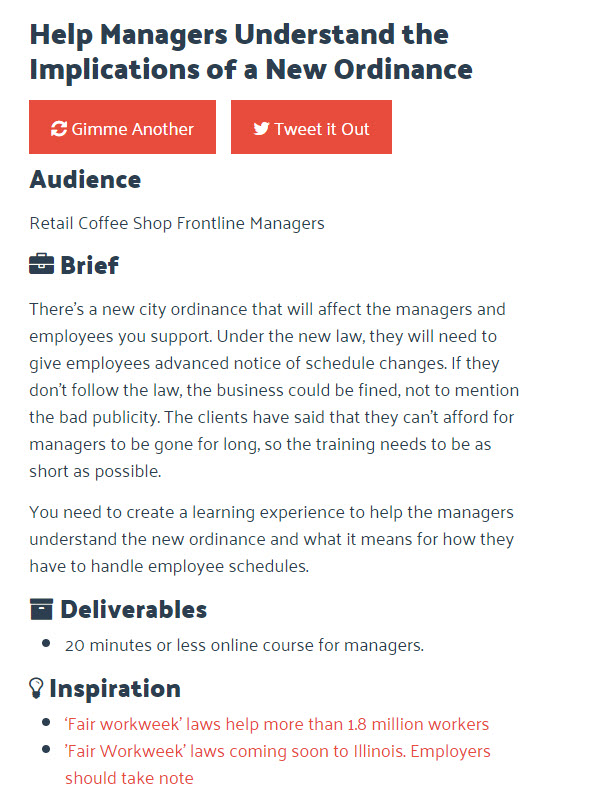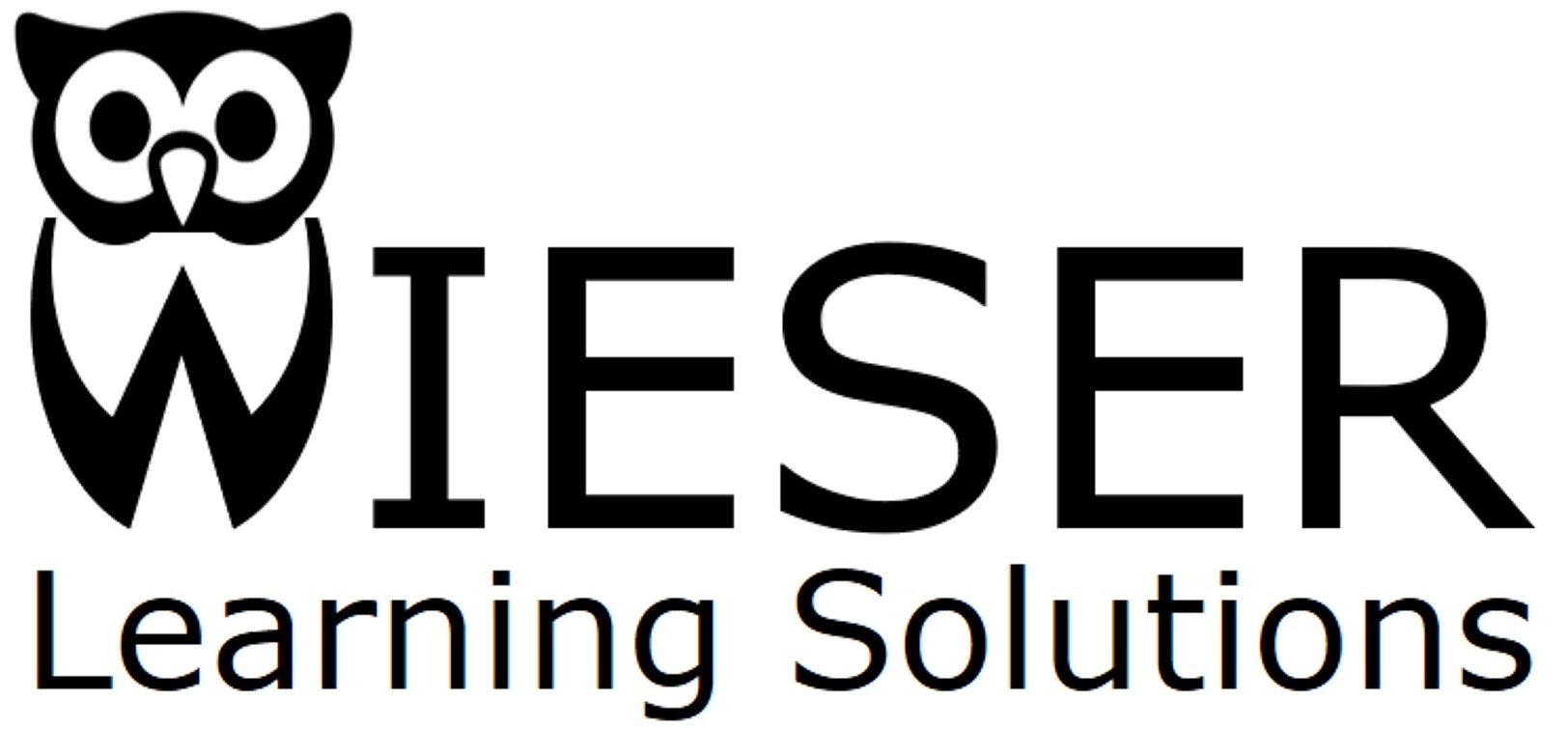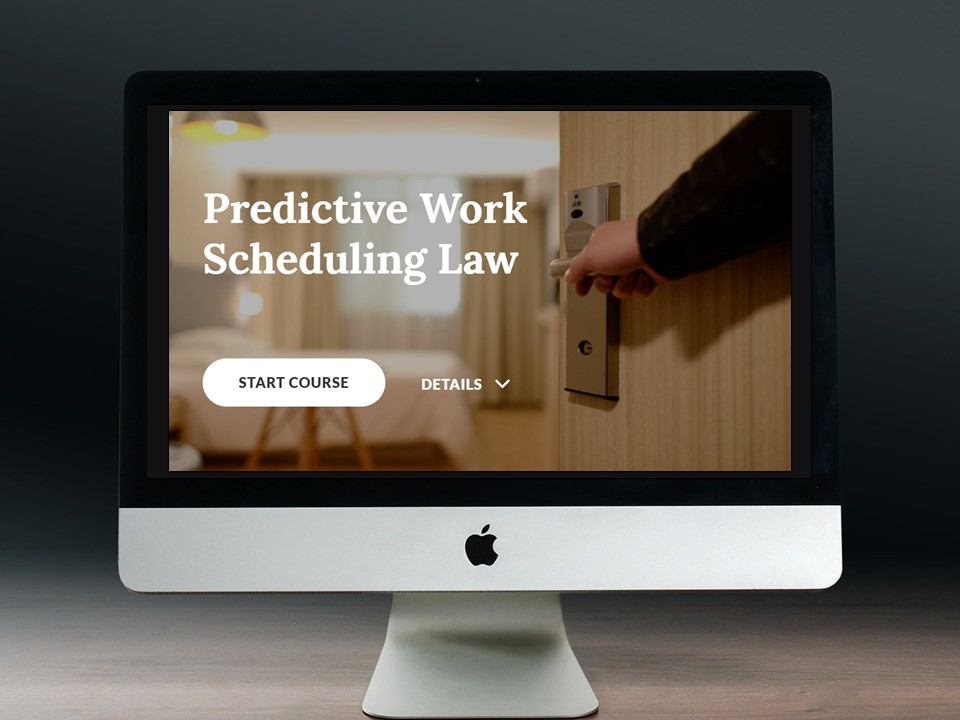One of the parts of AIDA that I'm enjoying are the member-run groups that supplement that coursework and coaching calls. Shortly after I joined, one member started a 4-week ADDIE challenge. This was designed to engage us in different aspects of the ADDIE framework, then develop a portfolio sample over the four week period.
The challenge was to select a scenario from Go Design Something as our inspiration for designing and developing a portfolio piece. I selected the new ordinance scenario and decided to focus on developing a compliance course that introduced Oregon's Predictive Work Scheduling Law.
I picked this topic because it was similar to a compliance course I previously designed and developed. My prior course was designed to ensure that hotel management and supervisory staff followed state and local laws and company guidelines when scheduling employees.
Since this was a similar topic (although different law) it felt like a good fit for a portfolio piece without violating any NDAs.

During the first week of the challenge, we selected our topic and discussed what types of needs analysis would support the development of our course, in addition to planning for how our fictitious client would implement and evaluate the training. I created the design document that set the target audience as hotel management and supervisory staff who were responsible for scheduling employees at a fictitious hotel chain in the state of Oregon. The course was designed to ensure that employees were aware of and complied with Oregon's Predictive Work Scheduling Law.
During the second week of the challenge, we provided feedback on each others' design documents, then used storyboards to design our courses. I decided to develop this course using Rise, since that was the format for the similar course I previously developed.
During the third week of the challenge, we provided feedback on each others' storyboards and then developed the course in the format of our choice. During the final week of the challenge, we shared our designs and provided feedback on each others' courses. Final refinements were made the following week. Overall, it was a great learning experience to see how others approached their design and development process.
You can see the final Predictive Work Scheduling Law course, along with the design document and storyboard on my portfolio page.

